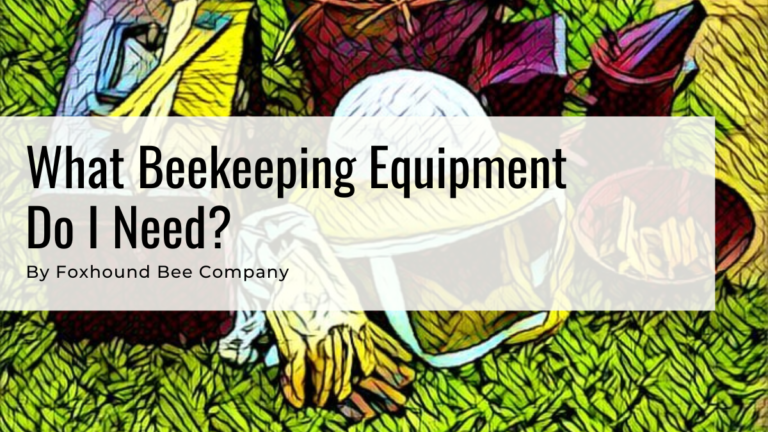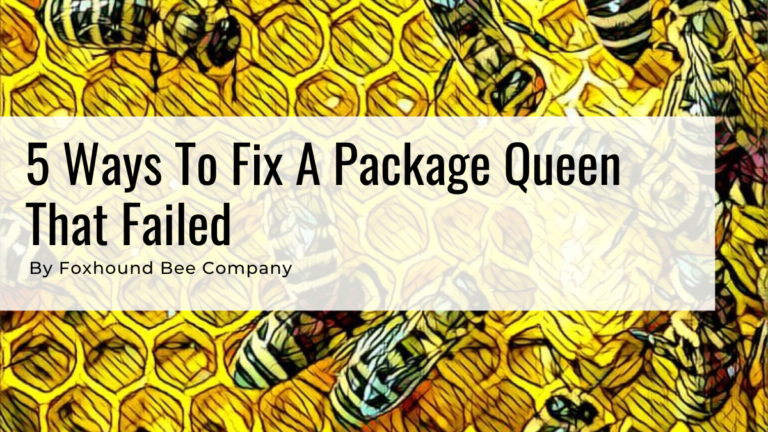Table of Contents
When you have decided to start beekeeping, there are certain things you will need to have before your honey bees arrive. These are some essential supplies and equipment that every successful beekeeper needs; the beekeeping basics.
If you study your beekeeping books and blogs, listen to beekeeping podcasts, go to a beekeeping class or local beekeeping club, or talk to experienced beekeepers (all part of a good beekeeping education), they will all say that new beekeepers need these five things: a hive tool, a smoker, a way to feed your bees, protective gear, and hive boxes.
Much like raising chickens, successful beekeeping requires some planning ahead. You wouldn’t start raising chickens without some planning—why would you start raising honey bees without the essential tools you need? Before you start buying bees, make sure you have the necessary tools. No matter if you are an experienced beekeeper or you just starting to keep bees, every beekeeper uses these 5 things.
Hive Tools
What They Do
A hive tool is a handy specialized pry bar that beekeepers use to separate hive parts that honeybees have glued together with propolis. Beekeepers also use them to scrape off unwanted propolis and burr comb. You’ll use a hive tool for various reasons every single time that you get into your hive.
Why You Need Them
Bees will use propolis to glue everything in the hive together—frames, hive beetle traps, cracks in the wooden bee boxes, and the boxes themselves. Bees will seal the inner cover to the top box, and they’ll seal the telescoping cover to the inner cover. You need a way to break those seals so that you can look into your beehive, and a hive tool is specially made for that purpose.
Types And Styles Of Hive Tools
There are many styles of hive tools, and during your time as a beekeeper, you’ll use (and lose) several. Most beekeepers keep a few on hand. The classic hive tool has a bent end and a straight end. The J-hook tool has a curved lever that is useful for lifting frames, and the KW tool is an all-in-one tool with a J-hook, a bent end, and a straight end. While these are the most common, there are many other choices. You will discover your favorite hive tool when you start keeping bees. We have over 30 options for hive tools.
What Are The Alternatives?
If you don’t have a hive tool, you might be able to use a large flathead screwdriver, a small pry bar, a pocket knife, or various other tools, but none of these will truly replace a hive tool. It is a very specialized and necessary implement for keeping honey bees.
Smokers
What They Do And Why You Need Them
Smokers work by confusing the bees. One way bees communicate is with pheromones, and when you smoke the hive, the bees can’t smell the alarm pheromones other bees may express. Also, they react to smoke by consuming stored honey, and bees with full bellies are calm bees. Smoke is one of the best defenses against stings.
You’ll light the smoker (See our blog How to Light a Smoker and Keep it Lit), give the hive entrance a few puffs, open the hive body, and puff a little smoke. As a result, the bees will be less defensive because they’ll be filling their tummies with honey, thinking they may need to escape a fire, oblivious to the scent of the alarm pheromones.
For your smoker, you’ll need fuel: many people use pine straw, wood pellets or shavings, burlap, cardboard, or small sticks and twigs. As you grow in beekeeping knowledge, you’ll find the fuel that works most reliably for you.
Types And Styles
Foxhound smokers come in two sizes. Our standard stainless steel bee smoker is a suitable size for most backyard beekeeping, and the stainless steel pro smoker is larger, allowing for more fuel and a longer smoking time. There is another style of feeder that has a domed top vs a angled top. These styles are just for looks and don’t make a difference.
What Feeders Do
When your bees arrive, they will need food to get started. The best way that a backyard beekeeper can help them right away is with a feeder. A feeder is any contraption made to hold and deliver a mixture of sugar water to the bees. The bees need the energy to build comb and get the hive going.
Here’s more information about feeding your bees sugar syrup.
Why You Need A Feeder
When a new beekeeper starts their first season of beekeeping, their bees probably won’t have any honey stores or drawn-out comb. They’ll be starting from scratch. The worker bees need the energy to draw out comb, feed the brood, and create royal jelly for their queen bees, and if the nectar flow hasn’t started, the workers will need a little help. A mixture of sugar and water will provide the energy that bee colonies need to get going.
Types And Styles Of Feeders
The most accessible feeder for a beginning beekeeper is a front feeder. These feeders have a base that slides into the front entrance and a circular opening for an upside-down jar with a lid full of small holes through which bees can drink. Beekeepers can see the level of the food through the jar and replenish the substance without having to open up the hive.
There are many types of internal feeders—frame feeders replace one or two frames in a hive and they can hold a gallon or more of sugar syrup. The beekeeper can check the levels and replenish the feed while doing a hive inspection. Top feeders go under the telescoping lid and on top of the inner cover, perhaps a slightly less intrusive way to feed.
What If You Don’t Feed?
Left to their own devices, the bees will find food. If there is a nectar flow, the foragers will bring back sufficient nutrition for their sisters. When there is a dearth, bees will visit local hummingbird feeders, garbage cans and recycling bins with soda cans, Gatorade containers at the nearest baseball field, and they’ll even rob weaker hives. Read our post about robbing bees, it’s really interesting.
Honey bees are stinging insects. You will need some kind of protective clothing. It is very important to protect yourself from stings. At the very least, you need to protect your eyes and face with a veil. If you are not very worried about reactions to bee stings, wearing a veil is the least cumbersome way to protect yourself.
The next level of protection is a jacket. Jackets and suits come in cotton and ventilated styles with built-in veils for your face. Many beekeepers choose jackets over suits because you can zip them up and put them on like a hoodie—no fiddling with zippers and velcro.
If you want the ultimate level of protection and safety from angry bees, you’ll want a beekeeping suit. A beekeeping suit is a full-body jumpsuit with a built-in veil that covers everything but your hands and feet. Wear a suit with some heavy-duty boots and good thick gloves, and it will be very unlikely that the bees can sting you.
Some beekeepers don’t wear them, but for a beginner, it is a very good idea to wear beekeeping gloves. Gloves designed for beekeeping will prevent bees from stinging you most of the time. As you become a more experienced beekeeper, you may decide that you don’t always need gloves. Other beekeepers will decide they do.

Master Guide – What Beekeeping Equipment Do I Need?
Figuring out beekeeping equipment is the most intimidating part of getting started in beekeeping. There are a lot of options, designs, and equipment configurations to
Beehives
Overview Of Types Of Hives
Your bees may come in a package, nucleus colony (nuc), or established hive, but no matter how they are delivered, they’ll need a hive box to live in and more boxes to add as your bee colony grows.
(Should you buy a package or a nuc? Here’s some information to help you decide: Nucleus Hives and Packages: The Major and Minor Differences)
The most common type of hives is Langstroth hives, which are made of wooden boxes built to accommodate frames of bees with just enough extra space for the bees to work. As you research, you will see many other hive styles, such as the Warre hive, top bar hive, flow hive, and others, but for universality, the Langstroth hive will serve you well.
Langstroth hives come in ten-frame and eight-frame sizes. The number refers to how many frames will fit into the box. Frames are always the same length, but they are different depths for fitting into deep, medium, or shallow boxes.
Should I Start with 8 or 10 Frame Equipment?
Ten-frame boxes obviously hold more brood and more honey, but full eight-frame boxes are a little lighter, which you might appreciate when you start doing hive inspections and harvesting honey.
Langstroth bee hives include a bottom board, one or multiple hive boxes which can be ‘deep,’ ‘medium,’ or ‘shallow,’ an inner cover, and a telescoping cover. Regardless of which hive style you choose, it will need to sit on a hive stand of some sort, not on the ground.
In most situations, bees will need at least a couple of boxes to fill with brood and food so that they can survive the winter season. Foxhound Bee Company sells beehive kits, which all include the parts that the honey bee needs to fill to survive winter.

Start Beekeeping
If you have these five things, you are ready to start beekeeping, and the next step is to decide where to place your beehives. (It is recommended that you start with two hives so that you can see differences and share resources between them. Having other colonies is very useful.) Try to find a beekeeping community, either at a local beekeepers club, online groups, or a local beekeeper who is willing to mentor you. When you are ready to harvest honey or other bee products, these people will be helpful. Keep your beekeeping books close by, and keep learning. There’s always more to learn.

Master Guide – How To Learn Beekeeping?
Learning to become a beekeeper is a rewarding and challenging experience. There are a lot of ways to learn how to keep bees, and we
Some Extra Things For Your Wish List
Bee Brush– a bee brush is good for gently moving bees out of the way.
Hive Beetle Traps– be proactive about hive beetles!
Leather Tool Belt– a nice way to keep your tools handy







